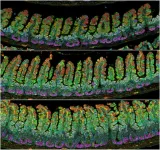Hyperuricemia (HU) is a metabolic disorder characterized by elevated uric acid (UA) levels in the bloodstream, commonly diagnosed when UA levels exceed 420 µmol/L (7 mg/dL) in men and 350 µmol/L (6 mg/dL) in women. Unlike other mammals, humans lack uricase, an enzyme that breaks down UA into a more soluble form, making them more susceptible to HU. The condition is influenced by genetic, dietary, and environmental factors, with contributors including purine-rich foods, metabolic dysfunctions, obesity, and impaired kidney function. HU is a significant health concern due to its strong association with cardiovascular diseases (CVDs), hypertension, gout, renal dysfunction, and metabolic disorders. Despite its prevalence, treatment guidelines vary, with some organizations advocating for pharmacological intervention, while others focus on lifestyle modifications. As research advances, new insights into the genetic and environmental determinants of HU are emerging, emphasizing the need for refined diagnostic and therapeutic strategies.
Association with Health Risks
Untreated HU is linked to several chronic conditions. Cardiovascular diseases are among the most concerning, with high UA levels contributing to endothelial dysfunction, oxidative stress, and inflammation, all of which promote atherosclerosis. Studies indicate that soluble UA can activate inflammatory pathways, exacerbating vascular damage. HU is also the primary risk factor for gout, an inflammatory arthritis caused by urate crystal deposition in joints. Beyond these conditions, HU is implicated in metabolic syndrome (MS), with approximately one-third of MS patients also presenting with elevated UA levels. The disorder also exacerbates renal insufficiency, contributing to chronic kidney disease and acute kidney injury by impairing UA excretion. Notably, while HU has been associated with an increased risk of cerebrovascular disease, it may also have neuroprotective properties, potentially lowering the risk of neurodegenerative diseases such as Alzheimer’s. Understanding these associations is essential for developing targeted interventions.
Current Diagnostic Approaches
Accurate diagnosis of HU relies on measuring serum UA levels. Despite the straightforward definition, variations in metabolic profiles between HU and gout complicate diagnosis. Recent technological advancements, including imaging techniques such as ultrasound and dual-energy computed tomography, have enhanced diagnostic precision by allowing non-invasive visualization of urate crystal deposits. Additionally, omics technologies, including metabolomics and genomics, are improving risk assessment by identifying biomarkers associated with HU. Emerging synthetic biology approaches, such as reprogramming Escherichia coli to monitor serum UA levels, represent novel diagnostic strategies. These advancements pave the way for precision medicine approaches in HU management.
Treatment Strategies
Pharmacological treatments for HU primarily focus on lowering UA levels. Xanthine oxidase (XO) inhibitors, such as allopurinol and febuxostat, are first-line therapies, while uricosuric agents enhance UA excretion. Combination therapy is often necessary for patients with treatment-resistant HU. Novel drugs, including lesinurad and interleukin-1 inhibitors, offer additional options for refractory cases. While effective, pharmacological interventions often present side effects, prompting interest in alternative treatments such as Traditional Chinese Medicine (TCM). Herbal remedies and plant-derived compounds show promise in regulating UA metabolism with fewer adverse effects. Additionally, dietary patterns like the Mediterranean diet have been explored for their potential in reducing serum UA levels.
Role of Lifestyle Factors
Lifestyle choices play a crucial role in HU development and management. Excessive consumption of purine-rich foods, alcohol, and fructose, along with sedentary behavior, increases the risk of HU. Conversely, dietary modifications, such as alkalizing urine through plant-based diets, may enhance UA excretion. Physical activity is also beneficial, improving insulin sensitivity and promoting UA clearance. However, intense exercise may elevate UA levels due to increased lactate production, highlighting the need for individualized recommendations. Recent research has explored the impact of gut microbiota on HU, revealing that probiotic interventions targeting UA-metabolizing bacteria may offer novel treatment pathways. A better understanding of the interplay between diet, microbiota, and UA metabolism could refine lifestyle-based management strategies.
Future Directions
Advances in precision medicine and genetic research are transforming HU management. Genome-wide association studies have identified polymorphisms in UA transporters and metabolic enzymes, enabling the development of personalized treatment strategies. Additionally, microbiota-targeted therapies, such as probiotics and fecal microbiota transplantation, hold promise for modifying UA metabolism. Novel pharmacological targets, including adenosine deaminase inhibitors and anti-inflammatory agents, are under investigation. However, challenges remain, including optimizing treatment duration and evaluating long-term outcomes. Future research should focus on integrating multi-omics approaches, refining diagnostic criteria, and expanding therapeutic options to enhance patient care.
Conclusion
HU is a multifaceted metabolic disorder with significant health implications. Its management requires a comprehensive approach that considers genetic, environmental, and lifestyle factors. While pharmacological treatments remain central, emerging research into microbiota modulation, alternative therapies, and precision medicine is expanding therapeutic possibilities. Continued research and collaboration among clinicians, researchers, and policymakers are essential for optimizing HU management and improving patient outcomes.
Full text:
https://www.xiahepublishing.com/2472-0712/ERHM-2024-00199
The study was recently published in the Exploratory Research and Hypothesis in Medicine.
Exploratory Research and Hypothesis in Medicine (ERHM) publishes original exploratory research articles and state-of-the-art reviews that focus on novel findings and the most recent scientific advances that support new hypotheses in medicine. The journal accepts a wide range of topics, including innovative diagnostic and therapeutic modalities as well as insightful theories related to the practice of medicine. The exploratory research published in ERHM does not necessarily need to be comprehensive and conclusive, but the study design must be solid, the methodologies must be reliable, the results must be true, and the hypothesis must be rational and justifiable with evidence.
Follow us on X: @xiahepublishing
Follow us on LinkedIn: Xia & He Publishing Inc.
END






